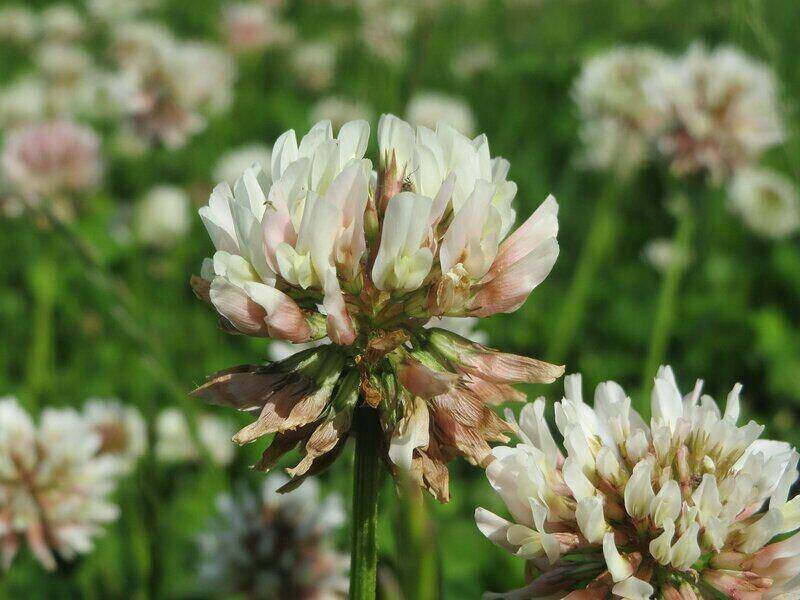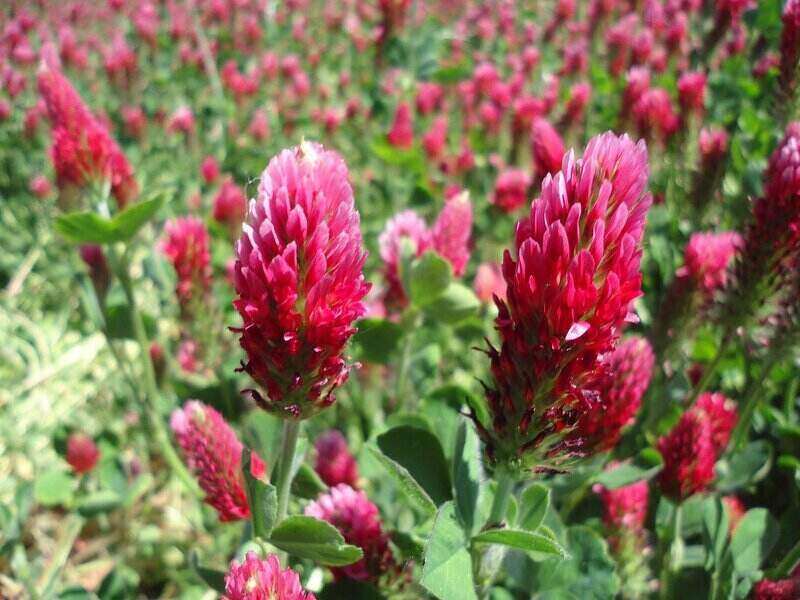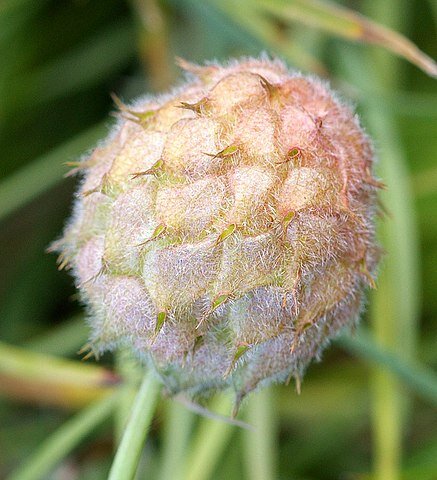Pros and Cons of Clover Lawns
BY RAVEN WISDOM | AUGUST 17TH, 2022 | BLOGThink clover is just another pesky weed? People are rediscovering clover as a low-maintenance, environmentally-friendly addition to their lawns. Check out the pros and cons of a clover lawn to see if it’s a good fit for you.
- Pros of a Clover Lawn
- Cons of a Clover Lawn
- What is Clover and What Type Should You Plant?
- Why is Clover Considered A Weed?
- Should You Plant a Clover Lawn?
- FAQ About Clover Lawns
Pros of a Clover Lawn
A lawn of only clover, or a grass and clover mix, has at least nine advantages over one with only turfgrass:
- Natural fertilizer: Clover converts atmospheric nitrogen into a form that plants utilize with the help of Rhizobium bacteria. It will thrive in poor soil.
- Organic weed control: Clover crowds out other weeds, saving you time, effort, and money on weed control.
- Low maintenance: Clover can reduce the need for nitrogen fertilizers, herbicides, and pesticides. It requires less mowing, less water, and is environmentally friendly.
- Water saver: Clover is drought-tolerant, and you can maintain a green lawn with less water when more clover is present.
- Improves soil: A deep root system prevents erosion and preserves the soil’s nutrients. Even after the plants have decayed, the seeds work as fertilizer, returning organic materials to the soil.
- Stays green: Clover will hold its color throughout the summer, except in extreme drought. It remains green all year in areas with mild winters.
- Pet urine resistant: Pet urine won’t turn clover brown as it does with grass. Clover’s deep root system makes it highly resistant to damage from your pets.
- Budget-friendly: Clover seed is relatively cheap. It will cost you roughly $1 to cover 1,000 square feet.
- Attracts pollinators: Clover attracts butterflies and bees, many of which are endangered. The preservation of healthy ecosystems depends on pollinating insects.
Cons of a Clover Lawn
Although clover is a fantastic option for many homeowners in the U.S., it might not be the ideal choice for you. There are at least five drawbacks to clover lawns:
- Bee stings: Clover attracts pollinators, which are essential for a healthy planet. However, If you are allergic to bee stings or if you (or your children) like to go barefoot in the grass, a clover lawn may be risky.
- Less durable: Clover alone isn’t as resilient as turfgrass. Mixing clover with grass seed will make it more resistant to heavy foot traffic. You’ll also have to overseed a clover lawn every three years.
- Appearance: If you prefer the look of a manicured grass lawn, clover may not be for you. Clover may appear less lush, uneven, and rougher than traditional turfgrass.
- Clover is invasive: To produce new plants, clover releases stolons, or runners, which spread across the soil’s surface. Those stolons and seeds may wander into flower beds, vegetable gardens, or your neighbor’s lawn.
- Tough stains: Clover stains are more difficult to remove than ordinary turfgrass stains. Cleaning vivid green stains out of your kid’s clothes is a major hassle.
What is Clover and What Type Should You Plant?
Clover is a legume from the pea family that originated in Europe and arrived in North America in the late 1600s. Early settlers commonly used clover in their lawns until the 1950s, when turfgrass became the popular choice.
The term “clover” refers to a group of around 300 plants in the genus Trifolium. You’ll see three varieties of clover commonly used as lawns in the United States:
- White clover (Trifolium repens) is the most common species and has pinkish-white flowers. Varieties include ladino, Dutch white clover, wild white, and microclover.
White clover blends well with cool-season turfgrass like fescues, Kentucky bluegrass, and perennial ryegrass.

Photo credit: Pixabay
- Red clover (Trifolium pratense) has flowers ranging from light rose to deep fuchsia. It’s also known as cow clover, meadow clover, and wild clover.
A cool-season ground cover, red clover grows well with perennial ryegrass, white clover, sweet clover, or tall fescue. This clover also mixes well with warm-season grass types, especially Bermudagrass.

Photo credit: Pixabay
- Strawberry clover (Trifolium fragiferum) is similar to white clover, but its white and pink flowers are slightly smaller. It grows well in coastal areas or near river estuaries.
This cool-season variation partners well with tall fescue, ryegrass, timothy, reed canarygrass, dallisgrass, and white clover.

Photo credit: Christian Fischer / Wikimedia Commons / CC BY-SA 3.0
Why is Clover Considered A Weed?
Some homeowners consider clover an unsightly weed, but before World War II, clover was a desired component of the seed mixes used on the finest lawns.
So what happened to clover lawns? Chemical corporations promoted broadleaf herbicides as essential in the 1950s. Weed killers like 2,4-D, which also destroys chickweed and dandelions, wiped out the clover.
Chemical makers identified clover as a weed, and buyers preferred the neat appearance of turfgrass over clover. So seed producers stopped marketing clover in their blends.
Should You Plant a Clover Lawn?
Consider clover if you’re looking for sustainable, eco-friendly alternatives to a turfgrass lawn. Review the pros and cons of clover above (or summarized below) to decide if it’s right for you.
Keep it: Clover helps your lawn grow healthier and more pest-resistant while using less fertilizer. It breaks up compacted soil and requires less frequent mowing. It is durable against pet urine and attracts pollinators like honeybees and other insects. (This last one is a downside if you’re allergic).
Get rid of it: Although clover can withstand periods of drought, prolonged dry spells will prevent it from spreading enough to cover a lawn. It is intrusive by nature, and in some shaded areas, it will grow, but the clover flowers will not bloom.
FAQ
1. Can you use clover to overseed an existing lawn?
Yes. Mow the lawn closely and remove any thatch before introducing clover as a grass alternative. This will ensure the seeds fall to the soil’s surface.
2. How long does it take clover to grow?
Four weeks is the average time it takes for clover seeds to mature after pollination. After you’ve seeded the clover in your yard, water it every day until it sprouts, and then every 2-3 weeks.
3. When should you plant clover?
Early spring or late summer into early fall are the best times to plant clover. It also works well for frost seeding just before the first heavy snow.
4. Is it possible to reduce the risk of bees on a clover lawn?
Yes. Mow the clover low to prevent it from flowering. It’s the flowers that attract the bees and other pollinators.
Whether you opt for a clover lawn or you want to get rid of the clover in your yard, we can help you find a lawn care professional to reseed and weed your lawn.
Main photo credit: Famartin / Wikimedia Commons / CC-BY-SA-4.0